The North End is Boston's
Italian village, where feast day blends into feast day all summer as the
great-grandchildren of Southern Italian immigrants celebrate the music,
food, and dolce vita of the old country. Every other storefront houses a
restaurant, café, or bakery and the cheers of European football fans
echo from the bars. These transplanted festivities continue year round,
merely moving indoors when the season chills. Yet the North End predates
its Italian inhabitants and the neighborhood is in fact the oldest in
Boston. The perimeter of the area along the waterfront bristles with
condo developments on the former shipping piers, which lead south to the
bustle of Long, Central, and Rowes wharves. Boston was born by the sea
and it is now reclaiming its waterfront as a vital center for business
and pleasure.
|
Italian food, wine,
and culture expert Michele Topor has lived in the North End for three
decades. Her tour of the local markets on Wednesday and Saturday (10am,
1pm, 2pm, 5pm), and Friday (10am, 1pm, 3pm, 6pm) includes tastings and
insights on local restaurants. To reserve a place, contact North End
& Chinatown Market Tours: 617 523 6032, www.cucinare.com.
|
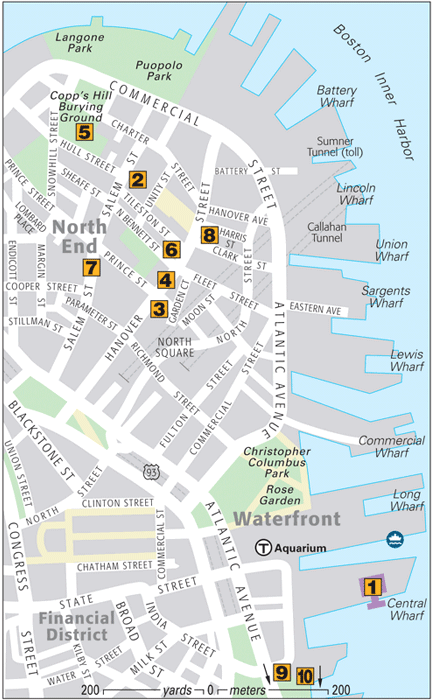
AttractionsNew England Aquarium Now
the centerpiece of the downtown waterfront development, the aquarium’s
construction in the 1960s paved the way for the revitalization of Boston
Harbor. Seals cavort in a tank in front of the sleek modern structure .
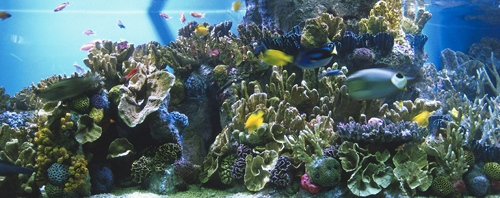
New England Aquarium
Old North Church An
active Episcopal congregation still worships at Boston’s oldest church,
officially known as Christ Church (1723). The austere interior looks
much as it did in its early days. It was here, in 1775, that sexton
Robert Newman hung two lanterns in the belfry to warn horseback
messenger Paul Revere of British troop movements.

Old North Church
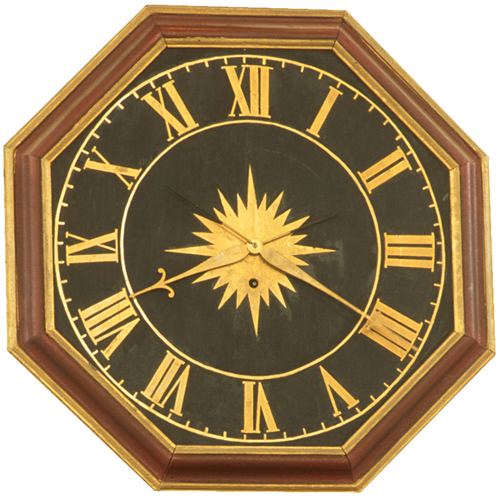
Old North Church clock
Paul Revere House Home
to Paul Revere for 30 years, this 17th-century clapboard house is the
only surviving home of any of Boston’s revolutionary heroes. It provides
an intriguing glimpse into the domestic life of Revere’s family with
displays of their furniture and possessions including silverwork made by
Revere, who was highly regarded as a metalsmith. Well-trained staff
narrate the tale of Revere’s legendary midnight ride.
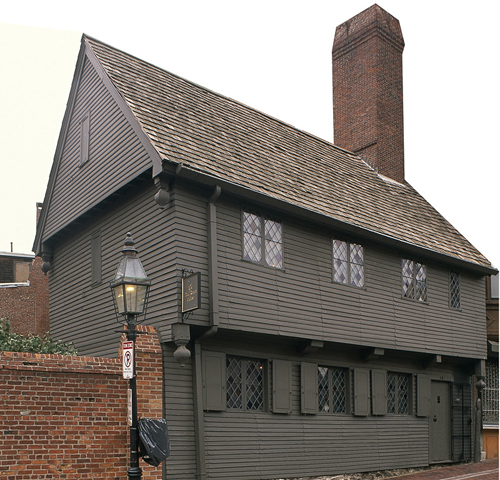
Paul Revere House
Hanover Street Originally built in the 17th-century to connect the shipping wharves to Dock Square ,
Hanover Street was widened in 1870 to accommodate the busy flow of
commerce. Today, as the North End’s principal artery with cafés and
eateries aplenty, it is the place to come for a slice of the action.
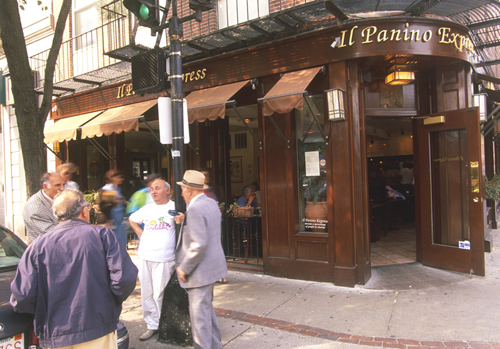
Hanover Street
Copp’s Hill Burying Ground Trace
the history of Boston on the thousands of tombstones here, from the
mean-spirited Mather family, theocrats who ruled the early city, to the
valiant patriots slain in the fight for freedom. In the Battle of Bunker Hill,
the British, who occupied the city in 1775, manned a battery from this
site and fired on neighboring Charlestown. There are sweeping views of
the harbor. Entrance on Hull St Open 9am–5pm daily No DA 617 635 4505
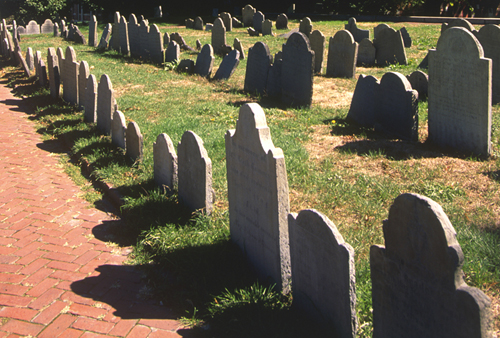
Copp’s Hill Burying Ground
Paul Revere Mall The
North End’s history as both revolutionary stronghold and Italian
immigrant neighborhood comes together along this tree-lined mall, which
old-timers persist in calling the Prado. Created in 1933, the pedestrian
mall connects Hanover Street to the rear of Old North Church. Bronze
plaques lining the walls capture snippets from the lives of former
Bostonians, while an equestrian statue of Paul Revere surveys it all.
Today, the mall is a social center, where mothers convene with baby
carriages, kids play frisbee, and old men hunker over checkerboards. Institute of Contemporary Art The
ICA was founded in 1936 and reopened in its new, landmark structure on
Fan Pier in 2006. The striking glass, wood, and steel building, designed
by Diller Scofidio & Renfro, is cantilevered over the Harbor Walk
and provides very dramatic views. The ICA champions cutting-edge art and
concentrates on 21st-century work. There is also an ambitious program
of performing arts. Fan Pier 617 478 3100 Open 10am–5pm Tue, Wed, Sat, Sun, 10am–9pm Thu–Fri Adm
www.icaboston.org
St Stephen’s Church Renowned
architect Charles Bulfinch completely redesigned the church’s original
1714 structure in 1802–4. This church is the only surviving example of
his religious architecture. The complex Neo-Classical exterior contrasts
with the open, airy, and relatively unadorned interior. In 1862, the
Roman Catholic archdiocese took over the church to accommodate the
area’s growing number of Irish immigrants. Rose Fitzgerald, daughter of
Boston mayor John “Honey Fitz” Fitzgerald and mother of President J. F. Kennedy, is linked to the church. She was baptized here in 1890, and her funeral took place here in 1995.
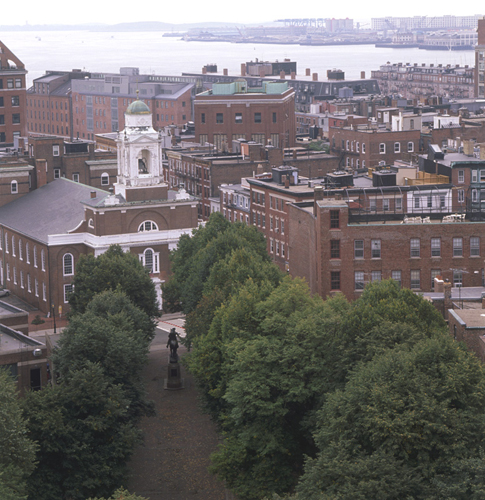
St Stephen's Church
Children’s Museum Educators
at this ground-breaking interactive museum for kids pioneered some of
the features now found in similar facilities around the world, including
giant soap bubbles and complex rampways for marbles .
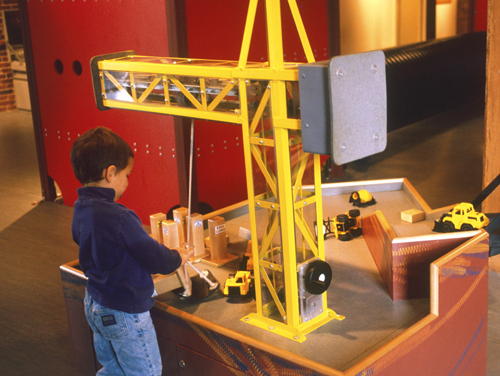
Children’s Museum
Boston Tea Party Ship The
historic occasion (known as the Boston Tea Party) when patriots,
dressed as native Americans, threw a consignment of English tea
overboard to protest against the imposition of the Stamp Tax of 1773,
proved to be a precipitating event of the American Revolution. The Boston Tea Party ship is a replica of the brig Beaver,
which was one of the vessels deprived of its cargo that fateful
December night. Aboard the ship, costumed storytellers recount events in
rousing detail while visitors sip tea (or dump it over the rail). Over
the centuries Boston has expanded into the harbor and the tea party site
now lies firmly inland at 470 Atlantic Avenue, where a plaque marks the
event.
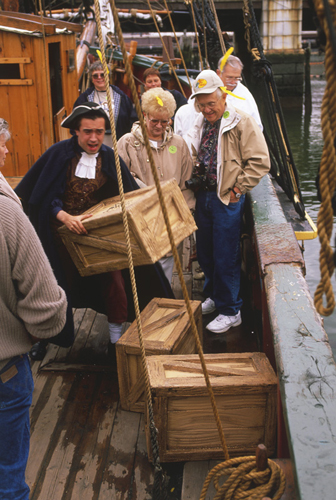
Boston Tea Party Ship
|